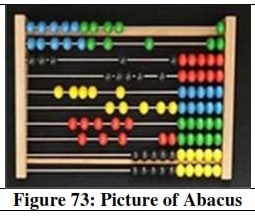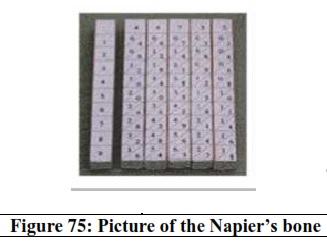CHAPTER ELEVEN
HISTORICAL DEVELOPMENT OF COMPUTERS
11.2 MECHANICAL COUNTING AND CALCULATING DEVICES
The limitations of the early counting devices forced man to develop new and fairly effective counting devices. Some of the devices developed are the mechanical counting and calculating devices. These devices were used for counting- addition, subtraction, division. The mechanical counting devices do not use electricity. They were operated by hand using gears, wheels etc
11.2.1. Abacus
11.2.2. Slide rule
|
11.2.1. Abacus Abacus was Abacus was the first calculating machine invented in 300BC in China. It is in use today in some parts of China. It consists of rings sliding over rods. Abacus was used for doing addition and subtractions. |
|
11.2.2. Slide Rule Slide rule was invented in 1617 by Napier, a Scottish. The gadget is made up of two flat plastics- a small plastic sliding over a longer one. Slide rule is use for performing calculations. |
|
11.3. MECHANICAL COUNTING DEVICES
Mechanical counting devices are those counting devices or calculators that use mechanical parts to operate or to run. Some of the mechanical counting devices used hundreds or thousands of years ago are:
11.3.1. John Napiers
11.3.2. Blaire Pascal
11.3.3. Gottfried Leibniz
11.3.4. Joseph Jacquard Loom
11.3.5. Charles Babbage
|
11.3.1. John Napiers Napiers bones was invented by a Scottish Mathematician called John Napier, between 1550-1617. The device consisted of set of bones. The bones are placed on vertical rectangular rods, each one divided in 10 squares. The device was used until 1960s to perform multiplications. |
|
| Click to page 32 | Page 33 | Click to page 34 |


